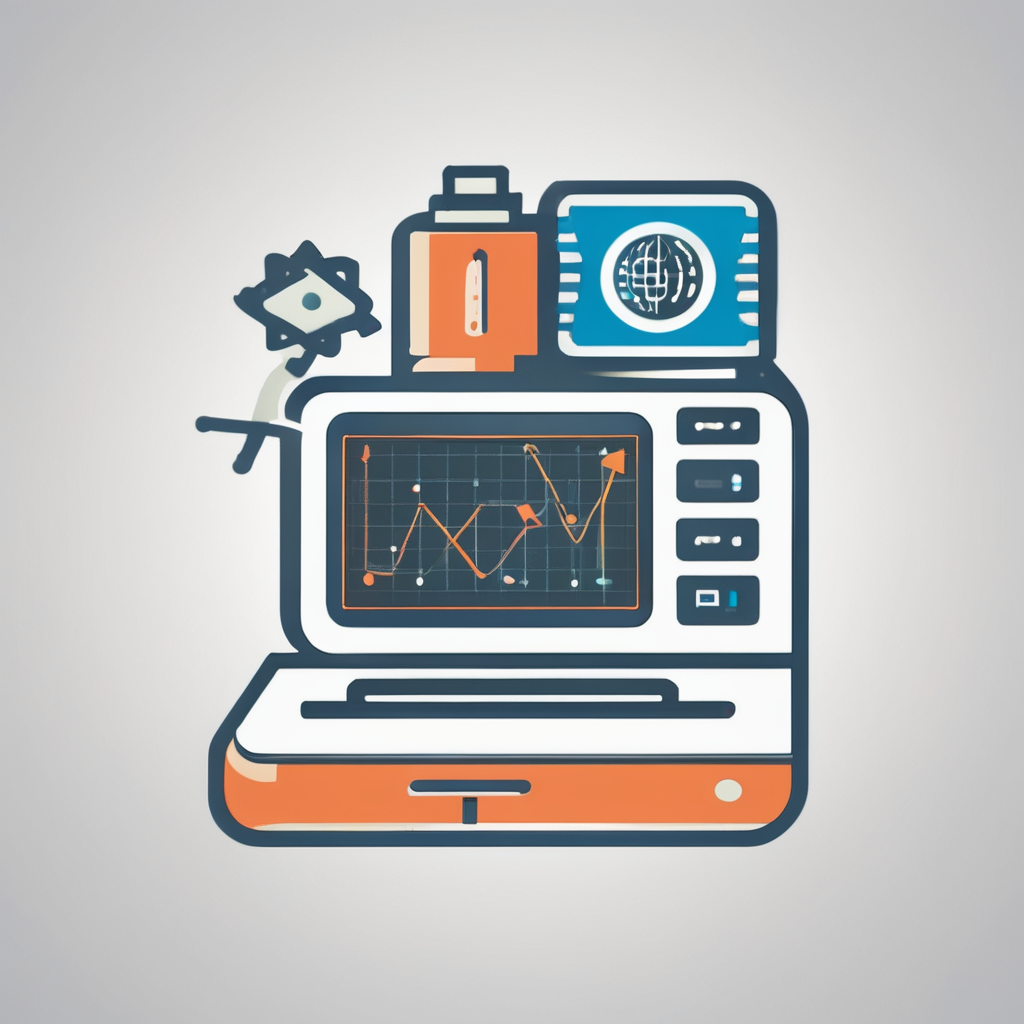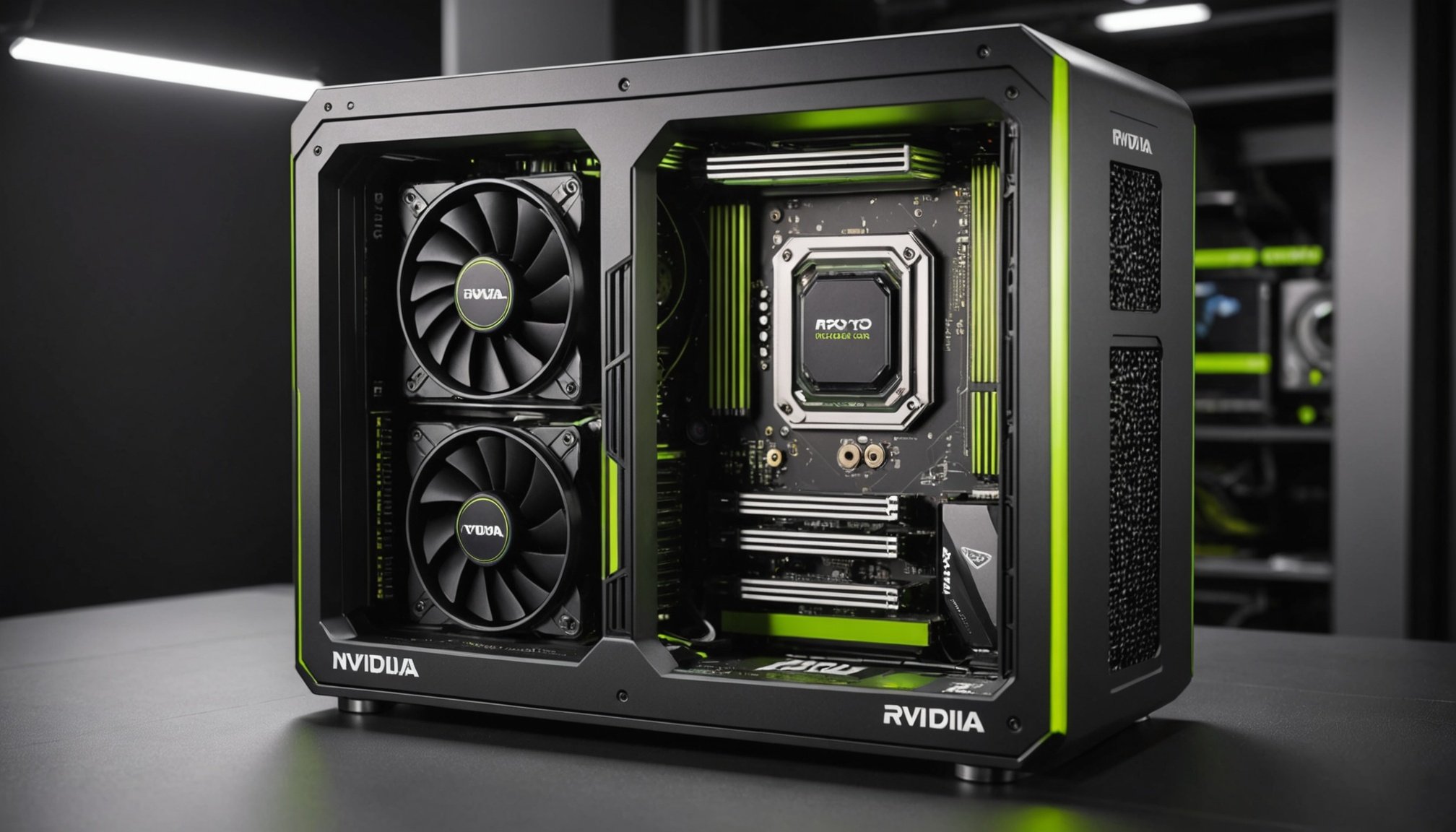Maximize your AI development capabilities by creating a high-performance workstation with the NVIDIA RTX A6000. This guide offers step-by-step instructions to choose the right components, optimize performance, and ensure seamless integration. Whether you're an experienced professional or a newcomer, you'll find practical insights to elevate your projects. Unlock the full potential of AI development with a setup that meets industry standards and supports your ambitious goals. Ready to level up your workstation? Let’s get started.
Introduction to AI Development Workstations
In the realm of AI development, a high-performance workstation is indispensable. These setups are designed to handle the complex computations and large datasets typical in AI projects, ensuring efficient workflow and reduced processing times.
Topic to read : Ultimate Guide: Step-by-Step Installation and Configuration of a Thunderbolt 3 Dock on Your Dell XPS 13 for Enhanced Connectivity
One standout in the market is the NVIDIA RTX A6000. This graphics card is renowned for its exceptional performance and reliability. It boasts features such as 48 GB of GDDR6 memory, which is crucial for managing extensive data processing tasks. Additionally, its advanced ray-tracing capabilities and AI-enhanced graphics make it a top choice for developers aiming for precision and speed.
Who benefits the most from such a robust AI workstation setup? Primarily, this guide targets AI researchers, data scientists, and developers who require powerful computational tools to innovate and experiment. These professionals often deal with intricate neural network models and need the assurance of a workstation that can support their demanding projects without bottlenecks.
In parallel : Maximizing Gaming Performance on a Budget: Essential Tips for Your Dell Inspiron 5502
For anyone in the AI field, investing in a capable workstation setup, like one equipped with the NVIDIA RTX A6000, can significantly enhance productivity and innovation. It’s about having the right tools to push the boundaries of what's possible in artificial intelligence.
Essential Hardware Components
Building an AI workstation requires careful consideration of several critical components. At the heart of any workstation is the CPU, which plays a pivotal role in processing complex algorithms and data sets. For AI workloads, it's recommended to opt for CPUs with high core counts and clock speeds. Intel's Xeon and AMD's Ryzen Threadripper series are popular choices, offering robust performance for demanding tasks.
RAM and Storage
The importance of RAM cannot be overstated. Sufficient memory is essential for handling large datasets and running multiple applications simultaneously. A minimum of 32 GB is advisable, though 64 GB or more provides better headroom for intensive tasks. Storage is equally crucial; SSDs are preferred over traditional HDDs due to their faster read/write speeds, which significantly reduce data access times.
Motherboard and Cooling
Selecting the right motherboard ensures compatibility and future-proofing. Look for motherboards that support the latest CPU sockets and offer multiple PCIe slots for expandability. Efficient cooling solutions are vital to maintain optimal performance and prevent overheating. Liquid cooling systems, although more expensive, provide superior thermal management compared to air cooling.
In summary, a well-balanced combination of CPU, RAM, storage, motherboard, and cooling solutions forms the backbone of a high-performance AI workstation, enabling researchers and developers to push the boundaries of innovation.
Choosing the Right NVIDIA RTX A6000 Configuration
When setting up a NVIDIA RTX A6000, understanding the different configurations available is vital for optimal performance. This graphics card offers flexibility, allowing users to tailor their setup based on specific needs and workloads.
Power Supply Requirements
A crucial aspect of the NVIDIA RTX A6000 setup is ensuring your power supply meets the card's demands. The A6000 typically requires a minimum of a 750W power supply. This ensures that the card operates efficiently, without power bottlenecks that could hinder performance. It's essential to choose a high-quality power supply to maintain stability and reliability.
Physical Setup Considerations
Consider the physical setup when integrating the NVIDIA RTX A6000 into your workstation. The card's size demands a spacious case with adequate room for installation. Proper airflow is also critical to prevent overheating. Ensure your case supports efficient cooling solutions, such as additional fans or liquid cooling systems, to maintain optimal temperatures.
Understanding these key factors ensures that your NVIDIA RTX A6000 setup is both powerful and reliable, allowing for seamless AI development and processing tasks. By focusing on configuration, power, and physical setup, you can maximise the card's potential in your AI workstation.
Software Requirements for AI Development
When diving into AI development, selecting the right operating system is crucial. Most developers prefer Linux distributions like Ubuntu or CentOS due to their robustness and compatibility with AI tools. However, Windows, with its extensive support for software, is also a viable option for those who prefer a more familiar interface.
Essential Software Tools and Libraries
To harness the full potential of AI, integrating software tools like TensorFlow and PyTorch is essential. These libraries are at the forefront of machine learning and deep learning applications. TensorFlow, developed by Google, provides a comprehensive, flexible ecosystem of tools and community resources. PyTorch, known for its dynamic computation graph, is favoured for research and prototyping due to its simplicity and ease of use.
Setting Up Drivers for NVIDIA RTX A6000
For optimal performance of the NVIDIA RTX A6000, installing the latest drivers is imperative. NVIDIA provides dedicated drivers tailored for AI tasks, ensuring seamless integration and enhanced performance. These drivers facilitate efficient communication between the hardware and software, allowing developers to execute complex computations with precision. Regular updates are recommended to maintain compatibility with evolving AI software tools and libraries.
Step-by-Step Software Installation
Embarking on AI Software Installation requires meticulous attention to detail, ensuring all components are properly set up for optimal performance. Begin with installing the operating system. Linux distributions, such as Ubuntu, are highly recommended due to their compatibility with AI tools. Ensure your system is up-to-date by applying the latest updates and patches.
Next, focus on configuring the GPU drivers. For those using the NVIDIA RTX A6000, install the dedicated NVIDIA drivers to enable seamless integration with AI applications. This step is crucial for harnessing the full potential of the GPU. Additionally, install the CUDA toolkit, which provides a suite of tools and libraries essential for running parallel computing tasks on NVIDIA GPUs.
Once the GPU drivers and CUDA toolkit are in place, proceed to set up your development environments. Popular IDEs like PyCharm or Visual Studio Code offer robust support for AI development. Configure these environments to work with AI libraries such as TensorFlow or PyTorch, ensuring they are ready for your projects.
By following these steps, you establish a solid foundation for AI development, facilitating efficient workflows and maximising your workstation's capabilities.
Benchmarking Your Workstation Performance
Understanding the performance of your AI workstation is crucial in ensuring it meets your project demands. AI Workstation Benchmarking involves using tools like MLPerf to evaluate how well your setup handles AI tasks. MLPerf is a widely recognised benchmarking suite that tests various aspects of AI workloads, providing a comprehensive view of your workstation's capabilities.
Tools for Benchmarking AI Performance
MLPerf offers a range of benchmarks tailored to different AI tasks, from image classification to language processing. By running these benchmarks, you gain insights into the strengths and weaknesses of your system. This information is invaluable for making informed decisions about potential upgrades or adjustments.
Interpreting Benchmarking Results
The results from MLPerf and similar tools highlight areas where your workstation excels and where it may need improvement. For instance, if your GPU performance is subpar, it might indicate a need for better cooling solutions or driver updates. Understanding these results helps in pinpointing bottlenecks that could hinder your AI projects.
Optimizing Configurations Based on Benchmarks
Once you have your benchmarking results, use them to optimise your workstation's configuration. This might involve adjusting hardware settings, upgrading components, or fine-tuning software environments. Regular benchmarking ensures your AI workstation remains at peak performance, supporting efficient and effective AI development.
Performance Enhancements and Optimization Tips
Enhancing AI performance requires a strategic approach to GPU settings. Tuning GPU settings can significantly boost performance, especially for complex AI tasks. Start by adjusting power limits and fan speeds to ensure the GPU operates within safe parameters while maximising output. Precision is key, so small, incremental changes are advisable.
Importance of Thermal Management and Overclocking
Effective thermal management is crucial in maintaining optimal performance. Overheating can throttle performance, leading to inefficiencies. Implement advanced cooling solutions like liquid cooling or high-performance fans to keep temperatures in check. Overclocking can push your GPU beyond its default capabilities, but it should be approached with caution. Ensure your cooling system can handle the increased heat output to prevent damage.
Utilizing Cloud Resources for Scalable Workloads
For scalable workloads, leveraging cloud resources is a practical solution. Cloud platforms offer flexible compute resources that can be tailored to your project's needs. This approach allows for handling larger datasets and more complex models without the constraints of local hardware. By integrating cloud resources, you can achieve AI performance optimization without significant investment in physical hardware.
Cost Considerations and Budgeting
When planning an AI workstation setup, understanding the AI Workstation Cost is essential for making informed decisions. Each hardware component contributes to the overall expense, and it's important to break these costs down to manage your budget effectively.
Breakdown of Costs for Each Hardware Component
- CPU: High-performance CPUs like Intel Xeon or AMD Ryzen Threadripper range significantly in price, depending on core count and speed.
- GPU: The NVIDIA RTX A6000 is a significant investment due to its advanced features and capabilities.
- RAM and Storage: Opting for 64 GB or more of RAM and SSDs can enhance performance but also increase costs.
- Motherboard and Cooling: Ensure compatibility and efficient cooling solutions, which can also add to the expense.
Budgeting for Future Upgrades and Expansions
It's wise to allocate part of your budget for future upgrades. This includes potential enhancements in RAM, storage, or even additional GPUs. Planning for these expansions can prevent bottlenecks as your project scales.
Evaluating Cost vs. Performance Trade-offs
Balancing cost and performance is crucial. Investing in high-end components might seem expensive initially, but they provide better longevity and efficiency. Carefully evaluate where spending more can yield significant performance benefits, ensuring your workstation remains robust and capable of handling demanding AI tasks.
Common Troubleshooting Tips
Navigating the complexities of an AI workstation can sometimes lead to unexpected challenges. Here, we provide essential tips for AI Workstation Troubleshooting to ensure smooth operation.
Identifying and Resolving Common Hardware Issues
Hardware issues can often stem from incompatible components or insufficient power supply. If you experience random shutdowns or performance lags, check the power supply's wattage and ensure all connections are secure. Inspect for overheating by monitoring system temperatures; if high, enhance cooling solutions. Regularly clean dust from components to maintain airflow.
Software Conflicts and Resolution Strategies
Software conflicts may arise from incompatible drivers or outdated software. Ensure all drivers, particularly for the NVIDIA RTX A6000, are up-to-date. If software crashes occur, check for updates or patches that address compatibility issues. Use system logs to identify problematic applications and consider reinstalling them if persistent errors occur.
Resources for Ongoing Support and Community Help
For ongoing support, leverage online communities and forums dedicated to AI development. Platforms like Stack Overflow and NVIDIA's developer forums are invaluable resources for troubleshooting. Engaging with these communities can provide insights and solutions from experienced professionals, enhancing your troubleshooting toolkit.
Real-World Examples of Successful Setups
Exploring AI workstation examples offers valuable insights into effective configurations. Notably, many professionals harness the power of the NVIDIA RTX A6000 to enhance their AI projects.
Case Studies of Professionals
A leading AI research lab utilised the NVIDIA RTX A6000 to accelerate deep learning tasks, achieving a 30% reduction in processing time. This setup included a high-core-count CPU and 128 GB of RAM, demonstrating the card's capacity to handle complex computations efficiently.
Comparison of Different Workstation Setups
Comparing setups reveals diverse approaches. Some teams opt for dual NVIDIA RTX A6000 cards, significantly boosting parallel processing capabilities. Others focus on balanced systems with ample RAM and SSD storage to ensure swift data access. These variations highlight the importance of tailoring configurations to specific project needs.
Lessons Learned from User Experiences
User experiences underscore key lessons. Effective thermal management is crucial, as the NVIDIA RTX A6000 can generate substantial heat. Users recommend robust cooling solutions to maintain performance. Additionally, regular software updates are vital for optimal functionality, preventing potential bottlenecks. These insights reinforce the necessity of a well-rounded approach to building an AI workstation.











